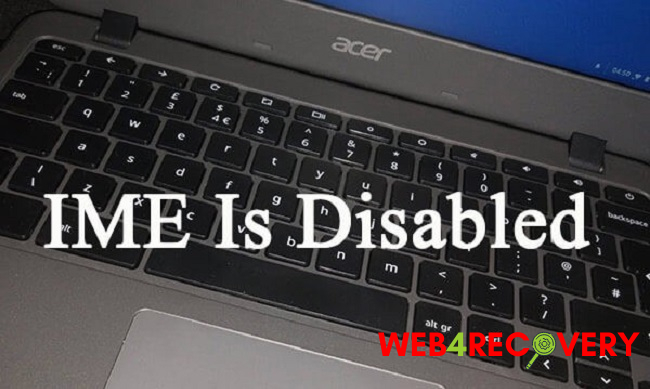For some languages, including Korean, Japanese, and Chinese, the input method editor (IME) in Windows 10 appears to have a persistent issue. Users have complained that the default IME either automatically enables and disables itself while typing, or it turns off after the system has booted.
Method 1: By Clicking The IME Icon in The System Tray, You Can Enable The IME Feature.

There have been numerous reports of the input method editor being deactivated after a Windows 10 update was installed. This is resulting in the removal of the IME icon from the toolbar. Use the keyboard shortcut for Alt + Shift (left) to see if this is true.
If you can switch languages using this shortcut, then IME is not truly deactivated; you merely need to toggle it back on using the toolbar icon. If the IME symbol isn’t already in the right-hand side of your toolbar, you may add it by right-clicking anywhere on your toolbar and selecting Show touch keyboard button from the menu that appears.
You’ll see the IME icon return in tandem with the touch keyboard’s activation. If you can switch languages normally, the problem is solved. Otherwise, proceed to the next procedure.
Method 2: Indicator Input Enabled From Notification Area
When Method 1 has failed, we should see if the Input Indicator is activated in the Notification Area. If you’re using more than one language in your job, being unable to move between input methods (IMEs) or keyboard layouts (keyboard layouts) is a major pain.
If the input indicator is not showing up, you can turn it on by following the steps below:
Step 1: To modify your taskbar’s appearance, right-click on it and select Taskbar settings from the menu that appears.
Step 2: To toggle the System icons on or off, scroll down to the bottom of the Taskbar settings (under Notification Area).
Step 3: Check that the toggle switch for “Input Indicator” is turned “ON” by scrolling down to it.
Method 3: Inputting New Data Via Alternative Methods in The Expert Settings
Altering the system’s advanced language preferences is another solution that has proven successful for many customers dealing with an inoperable IME. It turns out that there are two dialect options that cause problems with other input method editors.
We can fix this by turning off automatic learning and enabling separate input methods for each programme window on your system.
If you’ve disabled IME and want to try to turn it back on, follow these steps to adjust some of the more advanced language settings:
Step 1: To open the Run dialogue, press the Windows key plus R. Then, type “control /name Microsoft.Language” and hit Enter. If you want to change the language settings, press the Enter key to get to the Language Control Panel.
Step 2: To access the most in-depth options available for a given language, select Advanced on the Language window’s left side.
Step 3: Select the option that reads “Let me set a different input method for each app window” under the “Switching input methods” heading.
Step 4: Under Personalization data, choose Do not use automatic learning and clear all existing data.
Step 5: To test if your IMEs are working again, after clicking the Save button, restart your computer.

















